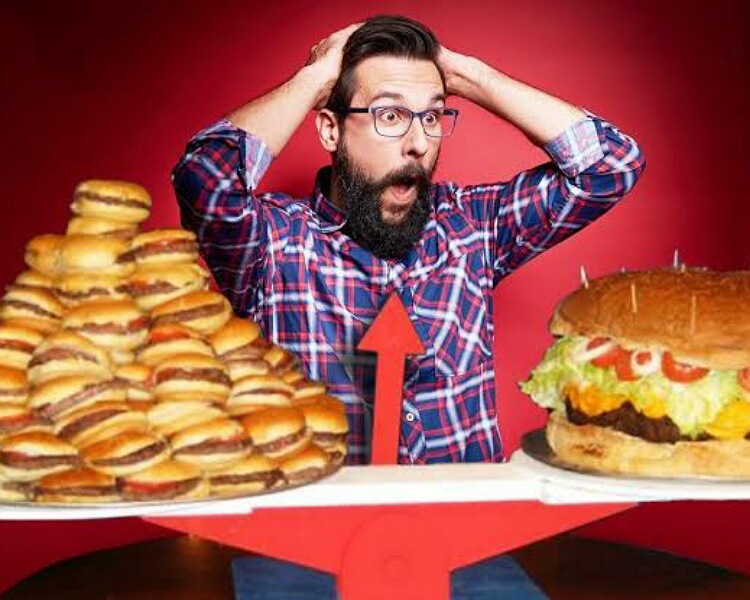Food challenges have been around since a long time. They gained popularity with time. Many people attempt these eating challenges of eating more in less time. But this practice even if done sometimes can adversely affect the gut and the body. It is not healthy.
Food challenges: history and types
Food challenges are challenges given to people on eating certain amount of food in a short time. It is usually a timed challenge. Many multinational food chains and even local chains put up these challenges for desirous people to try. In return, the person who wins the competition gets money, reward, and fame. The challenge serves as a marketing strategy for the food outlet too.
It was as way back as in 1913 that the Crown Candy Kitchen challenged its patrons to consume 5 24-ounce milkshakes in less than half an hour in order to win more free milkshakes, along with a T-shirt, and the picture of the winner on their wall of fame.

But the craze for these challenges came after Adam Richman started Man v. Food challenge.
Besides milk or milkshakes, the food chains challenge people for eating ice cream sundae, giant burritos, chicken wings, huge pancakes, or oysters. How do these challenges affect human body?
Capacity of stomach
The human stomach is 12 inches long and 6 inches wide. On an average, it can accommodate a quart of food. Competitive eaters have managed to gradually stretch it much more with chronic overeating. Competitive eater Matt Stonie had told Thrillist that he has a stomach that has a capacity of 16 to 20 pounds.
Another competitive eater, Michelle Lesco revealed to Women’s Health that she usually eats foods in increasing quantities to train her stomach to accommodate more in a short span of time. She consumes 4 liters of soda and a gallon of chocolate milk in a few minutes time.

Often these eaters jump while eating. This is to push the contents down the gut. Matt stated that standing straight also improved intake.
Milk challenges are worst because they are like solid food. Moreover, the lactose in them can be miserable for lactose intolerant person. Spicy food challenge has systemic symptoms and land you in hospital. Water drinking challenge can cause water intoxication and low sodium in blood. Jaws can suffer too.
Body reflexes tricked
Normally, when stomach is full, the muscles around it contract and makes one burp, feel nauseated or vomit. But competitive eaters have the ability to relax these muscles and continue to eat with no vomiting. The University of Pennsylvania researchers also found that the gut of these food competitors shows little or no peristalsis.
Furthermore, they trick their brain to ignore the satiety reflex that tells the person to stop eating. This reflex is via the vagus nerve and involves the brain. This happens especially with desserts where the brain’s reward system gets triggered and there is hedonic hunger. This is eating just for the sake of eating.

The abdomen of a competitive eater enlarges considerably and he or she runs the risk of gastric perforation. It takes few days to return to normal size and shape.
Cheering crowd caused men to eat more while women ate less with it, a Cornell university study showed. The women stated that they became conscious and felt embarrassed in front of an audience. This negatively affected their intake. But men felt proud with their feats in front of a crowd. That motivated them to eat more.
Read more: Aldis Hodge and his diet during training for his role in Black Adam!
Thin people tolerate food challenge better. But it leaves all people drained out for many days. Long term effects are yet not known.
